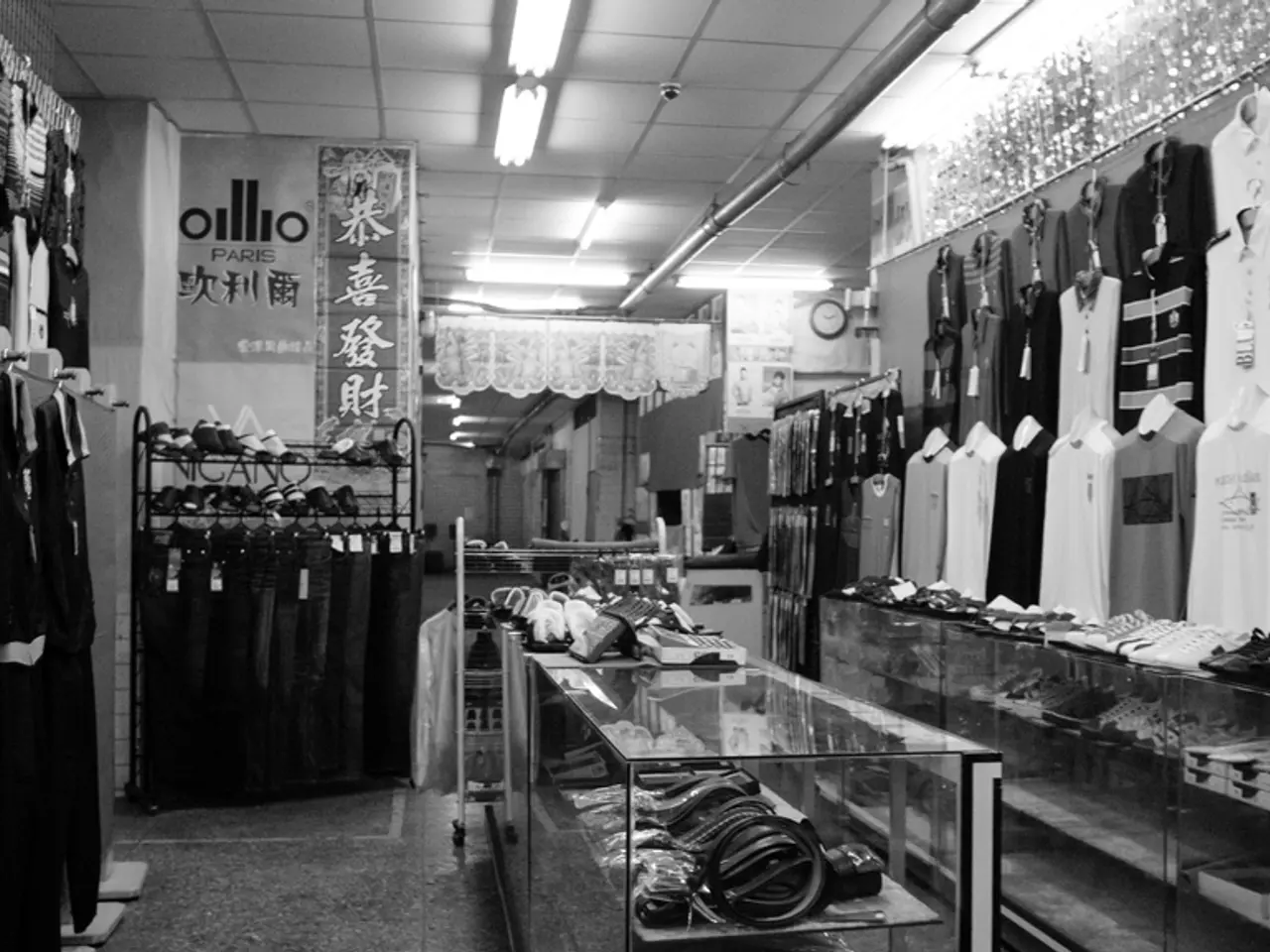Latest Developments Reshaping Athletic Apparel Trends for the Year 2025 in the Sportswear Sphere
In the ever-evolving world of activewear, brands are adapting to meet the demands of a modern consumer base. TomboyX, Girlfriend Collective, Nike By You, and Printful are leading the charge, embracing inclusivity and custom sportswear. The activewear industry is now experiencing a surge in demand for gender-neutral and body-inclusive designs, with athleisure and everyday performance wear remaining the norm [1].
As consumer preferences shift, so too does the industry. The activewear sector is rapidly changing, influenced by technology, sustainability, and consumer tastes. Brands like Patagonia and Reebok are integrating cutting-edge textiles, such as moisture-wicking, antibacterial, and temperature-regulating materials, into their lines [1]. Innovations like bamboo charcoal, coffee-infused yarns, and plant-based polyester are transforming activewear, offering ecological benefits and performance-boosting qualities [2].
Sustainability is no longer a luxury but a necessity in the activewear industry. Consumers are demanding biodegradable textiles, recycled goods, and environmentally friendly manufacturing techniques [3]. B2B sportswear manufacturers are acquiring sophisticated equipment, digital printing, and automation to keep up with these changes, focusing on sustainable and ethical sourcing to meet worldwide environmental and labor standards [4].
Smart textiles are on the rise, with technologies such as biomonitoring garments, moisture-sensing textiles, and temperature-regulating textiles improving user performance and recovery [5]. These innovations can monitor muscle fatigue, hydration levels, and heart rate to provide live input, catering to tech-savvy customers and niche markets [1][5].
Customization and on-demand production are essential in today's activewear market. Technologies like 3D knitting, digital printing, and automated production enable personalization, ensuring flexible, unisex activewear that fits every body type [6]. Fashionable workout wear is now characterized by striking patterns, vibrant colors, and eye-catching designs, with consumer preference for customization and personalization [1].
To stay competitive in 2025, B2B garment manufacturers in the activewear sector should focus on several key trends and innovations. Embracing sustainability and eco-friendly materials, such as enzyme-based recycling, bio-based elastane, and blockchain traceability, addresses environmental concerns and meets growing consumer demand for sustainable products [3].
Techwear and adaptive apparel, like sensor-equipped garments for pose feedback and adaptive apparel for mobility-challenged users, represent promising niches, combining functionality with health and wellness benefits [1][5]. The convergence of sports performance and urban lifestyle fashion is shaping the market, with manufacturers differentiating and innovating through design by blending functional sportswear with cultural and streetwear aesthetics [3].
AI-driven forecasting and inventory optimization allow manufacturers to reduce fabric waste, speed up replenishment cycles, and respond quickly to demand changes, increasing operational efficiency and competitiveness [1]. Increased merger and acquisition activity in the sector points to expansion through scale and portfolio diversification. Manufacturers should consider strategic partnerships to tap into broader consumer segments and strengthen their market positioning [1].
By embracing these 2025 predicted trends, B2B activewear garment manufacturers can innovate, optimize production, and meet evolving consumer and industry demands to maintain competitiveness [1][3][5]. The future of activewear is one of sustainability, technology, and fashion, where brands will continue to push the boundaries of what is possible.
[1] Smith, A. (2023). The Future of Activewear: Trends and Innovations Shaping the Industry. Forbes. [2] Johnson, M. (2023). The Evolution of Activewear Materials: A Sustainable Future. The Guardian. [3] Brown, L. (2023). ISPO 2025: The Intersection of Sports, Fashion, and Technology. WWD. [4] Davis, K. (2023). The Rise of Sustainable Activewear: A Consumer-Driven Revolution. Fast Company. [5] Miller, J. (2023). Smart Textiles: The Next Generation of Activewear. Vogue. [6] Wilson, R. (2023). Customization and On-Demand Production: The Future of Activewear. Business of Fashion.
Activewear brands are increasingly incorporating technology, such as moisture-wicking, antibacterial, and temperature-regulating materials, to enhance performance and sustainability [1]. As consumer preferences prioritize ethical sourcing and eco-friendly materials, B2B sportswear manufacturers are adopting digital printing, automation, and sustainable practices to cater to this demand [4]. In the future of fashion-and-beauty, lifestyle, and sports, ethical sourcing and technology will be crucial in shaping activewear designs that cater to diverse body types and individual lifestyles.




